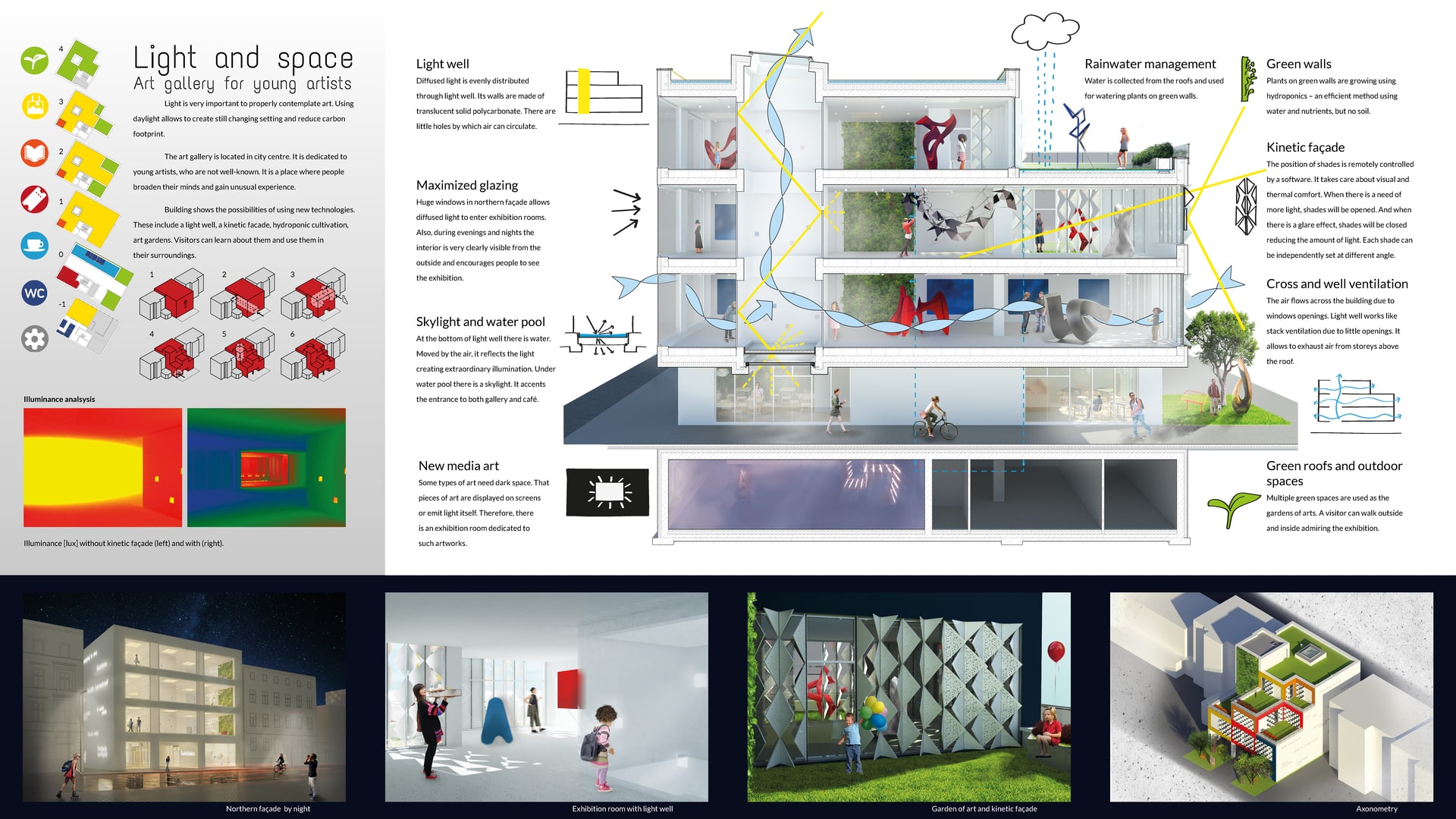Project Description
Light is very important to properly contemplate art. Using daylight allows to create still changing setting and reduce carbon footprint. Project focuses on creating good conditions for contemplating art. It shows interpenetration of architecture, light, art and greenery. The art gallery is located in city centre of Opole in Poland. It is dedicated to young artists, who are not well-known. It is a place where people broaden their minds and gain unusual experience. Northern façade is white. There are big windows, which allows diffuse light to enter exhibition rooms. By night the interior is visible from the outside and encourages people to see the exhibition. Southern part of the building contrasts with the northern. It has dynamic shape and vivid colours. Therefore, light can easily enter rooms. In summer and at noon there is too much light. To avoid glare effect there is kinetic façade. The position of shades is remotely controlled by a software. It takes care about both visual and thermal comfort. When there is a need of more light, shades will be opened. And when there is a glare effect, shades will be closed reducing the amount of light. Each shade can be independently set at different angle. Exhibition rooms located on upper floors are connected with light well, which distribute diffuse light. Its walls are made of translucent solid polycarbonate. At the bottom of light well there is water. Moved by the air, it reflects the light creating extraordinary illumination. Under the water pool there is a skylight. It accents the entrance to both gallery and café in floor 0. The light well also improves air quality by the openings in light well. Air is exhausted above the roof. It is working as stack ventilation. And there is cross ventilation across the building. Water used for watering plants on green walls is collected from the roofs. Many green walls also improve indoor climate. Plants are growing using hydroponics. That is an efficient method using only water and nutrients without soil. There are green roof and outdoor spaces, which are the extension of exhibition rooms. There are used as the gardens of arts. A visitor can walk outside and inside admiring the exhibition. Used solutions positively affect the aesthetics of the building, but also, they have an impact on the ecology of the building. These include a light well, a kinetic façade, hydroponic cultivation, art gardens. Project focuses on creating good conditions for contemplating art. It shows interpenetration of architecture, light, art and greenery.
